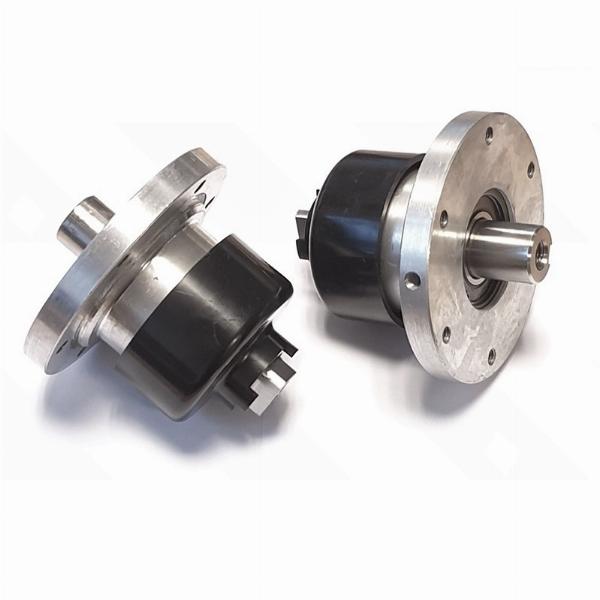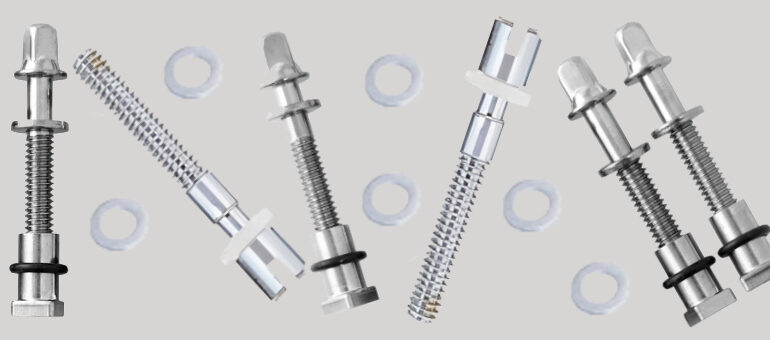How to Achieve a Perfect Short Bearing Shaft?

Strong 8k brings an ultra-HD IPTV experience to your living room and your pocket.
Do you have any idea that in the world of engineering & manufacturing, precision as well as efficiency play a paramount role? Well, if not then here is the perfect guide for you. Through this, guide you will not only get to know about Short Bearing Shaft but will also get to know how to achieve the proper one.
So, let’s have a look below & thoroughly learn about the essential steps to create a short bearing shaft that meets the highest standards of performance and reliability. But before diving into the process let’s have a look at the basic details related to short bearing shafts & be more informed.
What is a Short Bearing Shaft?
This is mainly a cylindrical component that is used in various mechanical systems to support the rotational movement that will result in reduced friction. Other than this, these are typically shorter in length than other available shafts & they operate within a bearing that provides smooth motion and load distribution.
Now, let’s have a look at the list of steps that are important to know to achieve a perfect short-bearing shaft:
Step-by-Step Guide to Achieving Perfection
1. Designing with Precision: A rigorous design approach is the first step towards achieving the ideal short-bearing shaft. This is what engineers need to keep in mind:
● Check the shaft's dimensions to make sure they are accurate and within tolerance limits. This contains any unique features like keyways or threads, as well as the diameter and length.
● The smoothness of the shaft's surface is necessary to reduce wear and friction. Reduced efficiency and early bearing failure are two possible consequences of a rough surface.
● Analyze the loads that the shaft will experience, taking into account torsional, radial, and axial loads. Choosing the right material and design specifications is aided by this study.
2. Selecting the Right Material: For the short-bearing shaft to function as intended and last a long time, the appropriate material selection is essential:
● Stainless Steel: Distinguished for its resilience to corrosion and robustness, stainless steel is perfect for uses requiring long-term resilience to challenging conditions.
● Carbon steel is a cost-effective and highly strengthenable material that may be used in many different industrial applications. Nevertheless, to improve corrosion resistance, more surface treatments might be needed.
● Alloys: Specialized alloys can offer a particular combination of strength, hardness, and resistance to corrosive environments or high temperatures.
3. Precision Machining: The intersection of theoretical design and practical implementation is machining. To achieve the ideal short-bearing shaft, the following procedures are essential:
● Turning: Utilize precision turning tools to attain the required surface smoothness and diameter. The accuracy and consistency of Computer Numerical Control (CNC) lathes make them the preferred choice.
● Grinding: cylindrical grinding machines are used to create incredibly smooth surfaces. To lower friction and improve the shaft's bearing compatibility, this procedure is essential.
● Heat Treatment: Various heat treatment procedures, including annealing, tempering, and hardening, may be required to give a material the appropriate mechanical qualities.
● Quality Control: Make sure the shaft satisfies all requirements by putting strict quality control procedures in place, such as dimensions inspections and surface roughness tests.
4. Assembly and Testing: After machining is finished, the shaft is assembled and tested to ensure it functions as intended:
● Bearing Fit: Verify that the shaft slides into the bearing precisely. For longevity and seamless functioning, a perfect fit is crucial.
● Load testing involves simulating operational loads on the shaft in order to evaluate how well it performs in actual circumstances. Torsional, radial, and axial load testing are included in this.
● Use vibration analysis to look for any irregularities that can point to problems like misalignment or imbalance.
Advanced Techniques for Enhanced Performance
Advanced methods can be used for applications that call for even greater levels of performance and accuracy:
● The purpose of cryogenic treatment is to improve the wear resistance and dimensional stability of the shaft by subjecting it to extremely low temperatures.
● Surface Coatings: Using specialist coatings can greatly lower friction and lengthen the shaft's lifespan. Examples of these coatings are ceramic or diamond-like carbon (DLC).
● By identifying surface and subsurface flaws, Magnetic Particle Inspection (MPI) is a non-destructive testing technique that guarantees the structural integrity of the shaft.
Maintenance and Longevity
To maintain long-term performance, correct maintenance is equally as important as the initial manufacturing process in achieving the ideal short-bearing shaft:
● Consistent Lubrication: Make sure the shaft and bearings are well-greased to reduce wear and friction. Make use of lubricants that are appropriate for the operating conditions and of excellent quality.
● Regular Inspections: Check for wear, corrosion, or damage with routine inspections. Catastrophic failures can be avoided by early issue detection.
● Schedule of Replacements: Based on the load cycles and operating circumstances of the shaft, establish a replacement timetable. System dependability can be preserved and unplanned downtime can be avoided with proactive replacement.
Conclusion
Now, you get the best idea that creating a perfect short-bearing shaft is a meticulous process that demands a deep understanding of design principles, material properties, precision machining, and rigorous quality control. So, for that, you should follow & keep the above steps in mind as through these you will end up receiving the perfect one that will result in ensuring its longevity and effectiveness in the field.
Other than this, if looking to grab additional information, then you can contact our professionals as they will always be happy to assist you.
Also Read: 3 Types of Assy All Product Designers Should Understand
Note: IndiBlogHub features both user-submitted and editorial content. We do not verify third-party contributions. Read our Disclaimer and Privacy Policyfor details.






